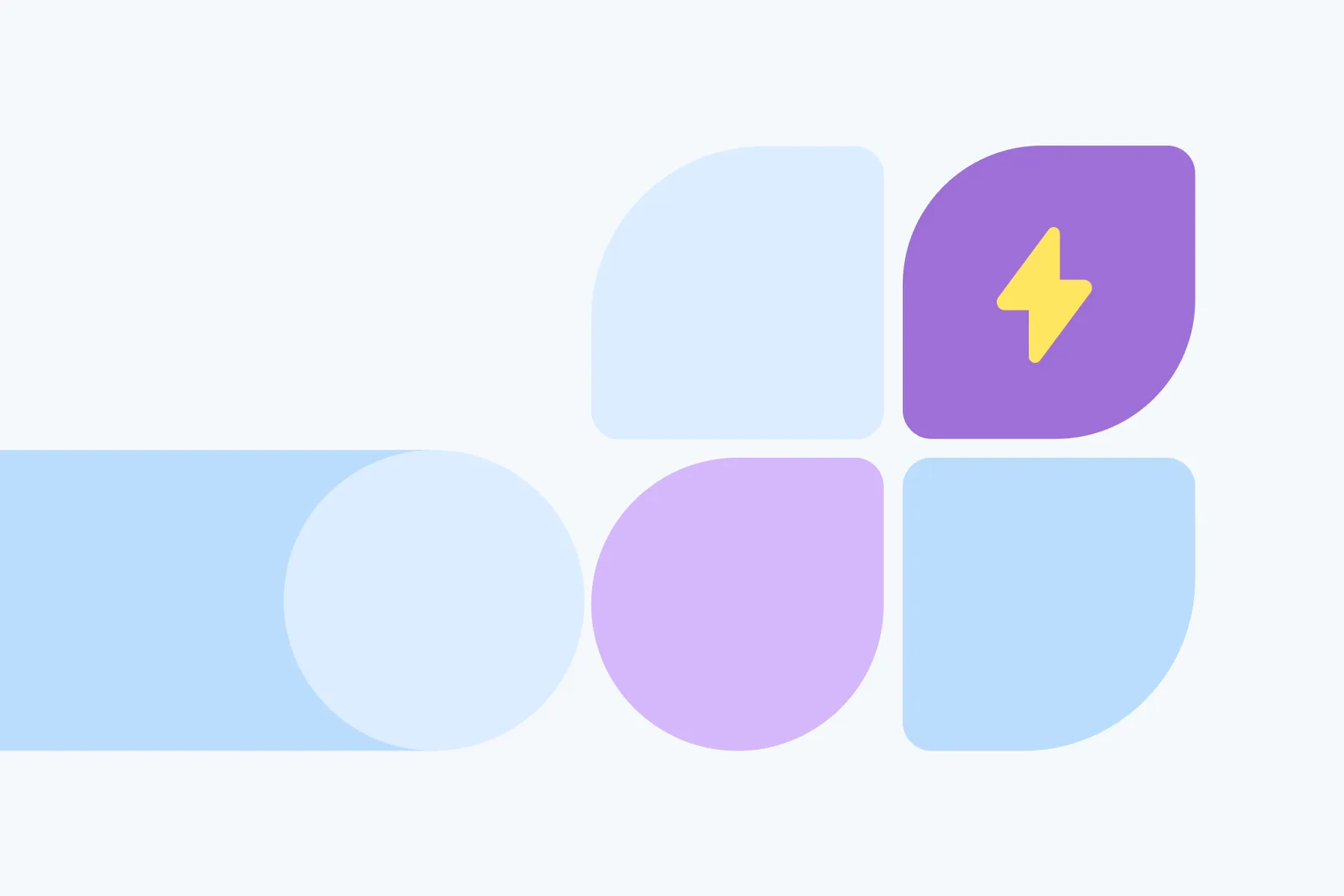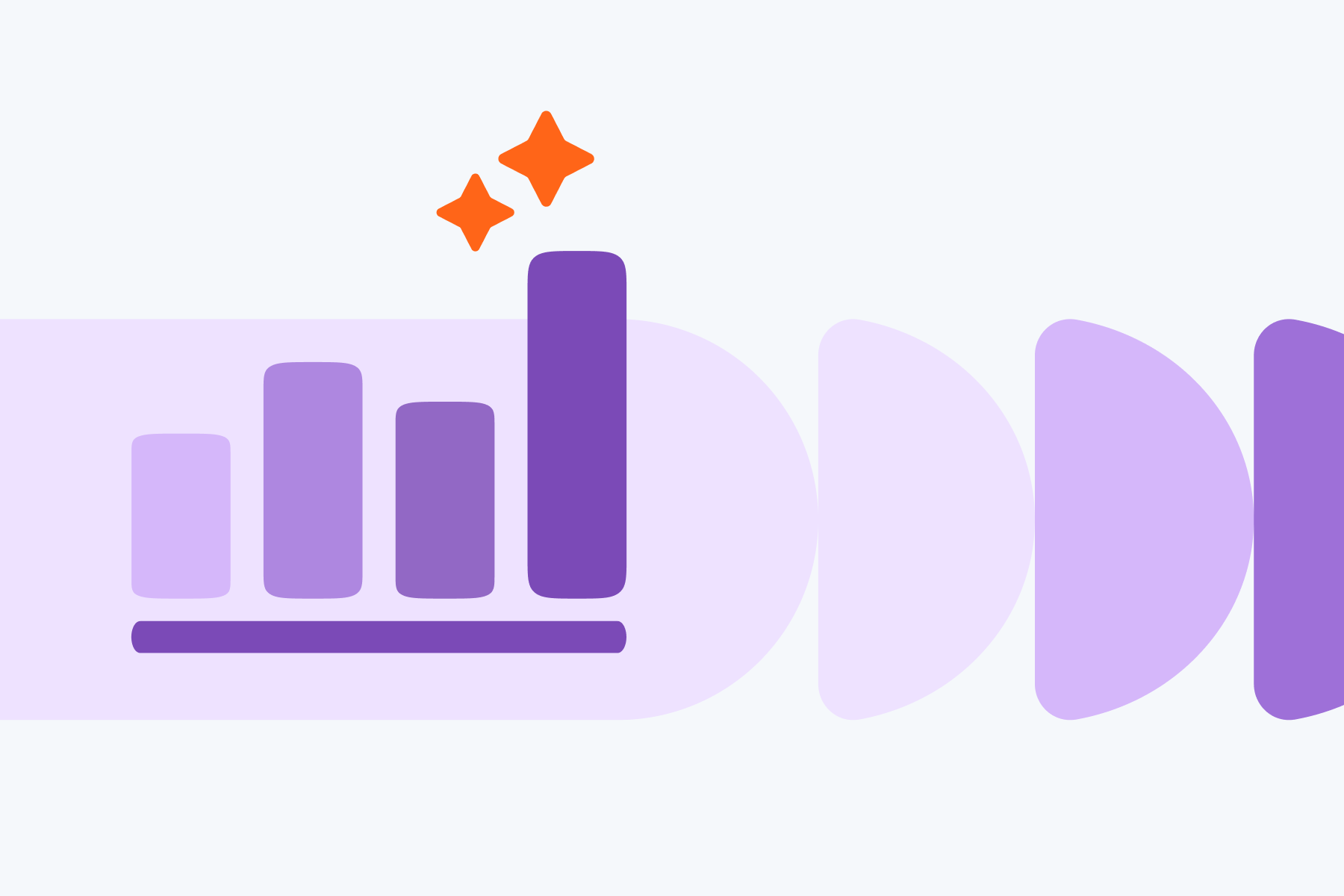Paid Acquisition Role in a Scalable B2B SaaS Strategy
Anastasiya Khvin
August 27, 2025

You've probably read a dozen articles about SaaS marketing strategies that all say the same thing. "Content is king!" "Build an audience!" And yeah, there's truth in all that. But after spending the last decade at Aimers auditing hundreds of saas marketing campaigns that went sideways, we're tired of pretending that organic growth alone is going to save your saas buisness.
Your competitors aren't sitting around waiting for their blog posts to rank. They're out there buying their way to your saas customers while you're optimizing meta descriptions.
Why Traditional Marketing Feels Like Swimming Upstream in Today's SaaS Marketing Strategy Landscape
The SaaS market changed. Dramatically. Most founders are still playing by 2015 rules.
What worked for early SaaS companies—when there were maybe 100 decent tools in each category instead of 10,000—just doesn't work now. HubSpot could build a massive audience through content marketing because there wasn't that much competition for attention. Now? Your prospects see 5,000+ marketing messages daily. That's not hyperbole.
Traditional marketing methods assume people follow nice, linear journeys. See ad, visit website, read content, convert. Cute theory. Reality is messier.
B2B SaaS customers are chaos incarnate. They research for months, involve six different stakeholders, and disappear for weeks.(And somehow the person who was most excited in January is now "exploring other options" in March.)
We've managed over $30 million in ad spend for SaaS companies. The pattern is always the same: companies that wait for organic traffic are still waiting. The ones that figure out effective SaaS marketing early are actually growing.
Building the Foundation Where Paid Acquisition Fits Your Effective SaaS Marketing Strategies
Think of paid acquisition as the thing that makes everything else work faster.
It's not about replacing your SaaS content marketing strategy. It's about not waiting two years for Google to decide your blog is worth ranking. But most saas companies screw this up because they treat paid like some side project instead of part of their actual SaaS marketing plan.
Integrating Paid Channels with Your Existing SaaS Marketing Plan
The number of times we've seen SaaS companies launch Google Ads like it's completely unrelated to everything else they're doing... it's depressing.
They'll have a content marketing team cranking out thought leadership. Email marketing automation running on autopilot.Then someone in leadership goes "we should try some ads" and suddenly there's this completely disconnected SaaS marketing campaign promoting features that don't even match their current messaging.
When we worked with Upper Hand, we actually looked at what was already working in their SaaS marketing funnel. Where were people dropping off? What content was resonating? Then we used paid channels to amplify the good stuff. Our conversion rate optimization work on their landing pages reduced unqualified leads by 57% while the paid campaigns drove higher intent traffic.
The result? A 60% increase in lead quality and actual conversions.
Your paid campaigns should be doing three things: amplifying your best organic content, retargeting people who visited but didn't convert, and bridging gaps between awareness and actually caring about your SaaS product.
The Strategic Shift from Growth-at-All-Costs to Sustainable B2B SaaS Marketing
Remember 2021? When many SaaS companies were lighting money on fire just to hit growth targets?
Those days are over. The saas market grew up. Investors care about unit economics now. They want to see sustainable SaaS growth, not growth that requires burning through Series B funding just to acquire SaaS customers who'll churn in six months.
We've watched too many B2B SaaS companies optimize for cost-per-lead while completely ignoring that 90% of those leads never become paying customers. It's like being proud that you filled your resturant with people who only order water.
Effective B2B SaaS marketing means you actually care about Customer Acquisition Cost, Lifetime Value, and whether people stick around long enough to make the math work. Understanding these SaaS metrics is what separates successful companies from those that burn through funding. Yes, your initial cost per lead might look scarier. But when those leads actually convert within your saas marketing funnel, your CFO stops looking at you like you're personally responsible for the company's demise.
Channel Selection Games Matching Paid Platforms to Your SaaS Business Model
Not all marketing channels are created equal in the SaaS industry.
The productivity SaaS platform targeting freelancers shouldn't be using the same digital marketing strategies as the enterprise security solution selling to IT directors. Yet saas companies make this mistake constantly.
Google Ads for High-Intent SaaS Customer Acquisition
Google Ads is still the gold standard for capturing people who actually want to buy something in the SaaS market.
When someone searches "best CRM software for small business," they're not just browsing for fun. They have a problem, they need a SaaS solution, and they're actively looking for options.
But most SaaS companies approach Google Ads like they're throwing spaghetti at a wall. They bid on "CRM" (along with every other CRM company on earth) and wonder why their saas marketing campaigns aren't working. Of course they're not working. That keyword captures everyone from students to your direct competitors.
We focus on long-tail keywords that actually indicate buying intent: "CRM software with email marketing automation for real estate agents" or "project management SaaS platform for remote design teams." Our Google Ads management approach focuses on quality over quantity, always.
Google's own research shows that longer, more specific search queries have significantly higher conversion rates than broad terms.
The difference between building effective SaaS marketing strategies that cover the entire buyer journey versus just randomly bidding on industry terms is the difference between fishing with precision and just dumping nets in the ocean.
LinkedIn's Role in Account-Based Marketing for B2B SaaS Companies
If you're selling to enterprise or targeting specific decision-makers, LinkedIn is basically cheating in the B2B SaaS marketing game.
The targeting capabilities are honestly ridiculous. You can target the VP of Sales at manufacturing companies with 500-1000 employees who visited your SaaS pricing page in the last 30 days. It's like having a crystal ball for effective B2B SaaS marketing.
For one of our B2B SaaS clients targeting HR directors, we created a LinkedIn SaaS marketing campaign that generated leads at 40% lower cost than Google Ads. Why? Because we understood that HR directors don't just want another SaaS product.They want to solve specific problems: employee retention, compliance headaches, onboarding disasters.
LinkedIn's targeting capabilities are particularly powerful for B2B because you can target based on actual job titles, company size, and industry - data that's usually self-reported and accurate.
LinkedIn also handles long sales cycles better than other platforms. B2B SaaS sales cycles can drag on for months. Our LinkedIn advertising services include sophisticated retargeting sequences that let you stay relevant throughout that entire journey.
When to Use Facebook and Alternative Platforms for SaaS Growth
Facebook for B2B SaaS marketing? Sounds weird, but it works for the right SaaS companies.
Especially if you're targeting SMBs or entrepreneurs. Small business owners are on Facebook learning about marketing tactics, joining entrepreneur groups. If that's your SaaS customer base, that's where you need to be.
We've also had surprising success with Reddit for niche SaaS products. Developer tools marketing to specific programming subreddits can generate incredibly engaged traffic for your SaaS brand. Reddit's advertising platform has evolved significantly and now offers sophisticated targeting options for B2B companies. We've written about unconventional PPC strategies for SaaS that include these alternative platforms.
Advanced Targeting Strategies That Drive Effective B2B SaaS Marketing Results
The difference between amateur and professional targeting usually comes down to psychological understanding of your SaaS customer.
One strategy that consistently works for saas customer acquisition is "competitor displacement campaigns." Target people who visited competitor websites but haven't purchased yet. The messaging focuses on specific differentiators instead of generic benefits.
Instead of "Better project management software," try "Unlike Asana, we don't charge per user—perfect for growing teams." This acknowledges they're already shopping and focuses on why they should choose your SaaS solution specifically.
Another approach: "job-to-be-done targeting." Target based on specific problems people are trying to solve. Someone searching "reduce customer churn" has a completely different mindset than someone searching "customer success software," even though they might need the same SaaS platform.
Attribution and Measurement Getting Real About ROI Across Your Marketing Campaign Portfolio
Attribution in B2B SaaS marketing is a mess. Let's just acknowledge that.
Your SaaS customer sees a LinkedIn ad, visits your website, reads three blog posts, attends a webinar, disappears for two weeks, then converts after clicking a Google ad. Which marketing channel gets credit?
Multi-Touch Attribution Models for Complex B2B Sales Cycles
First-click and last-click attribution are basically useless for most SaaS companies.
They either give all credit to awareness campaigns or conversion campaigns. Both completely ignore the nurturing that happens in between, which is often the most important part of your saas marketing funnel.
We typically recommend time-decay attribution for SaaS clients. Gives more credit to touchpoints closer to conversion while still acknowledging that awareness campaigns matter. But honestly? The specific model matters less than having consistent measurement across all marketing channels.
What matters more is tracking the right metrics at each funnel stage. Our analytics and tracking setup ensures you're measuring what actually drives business growth, not just vanity metrics.
Connecting Paid Acquisition Data to Customer Lifetime Value
Most SaaS companies optimize for short-term conversions without thinking about long-term value.
A SaaS customer acquired for $500 who churns after three months is worse than a customer acquired for $800 who stays for two years and upgrades twice. This is basic math, but somehow SaaS companies miss it consistantly.
We push clients to connect their paid acquisition data to actual revenue and retention metrics. For one client, we discovered that customers acquired through LinkedIn ads had 40% higher lifetime value than those from Google Ads. We worked with RecMan and helped them slash their CPA by 65% while increasing qualified leads. Their conversion to MQL rate hit 93% after we rebuilt their Google Ads campaigns.
.webp)
This insight completely changed their SaaS marketing budget allocation and overall strategy.
Budget Allocation Frameworks for Proven SaaS Marketing Strategies
Budget allocation is where SaaS companies either play it too safe or go completely reckless.
Finding the sweet spot between proven performers and growth experiments is like managing an investment portfolio. You need stable returns and growth potential.
The 70-20-10 Rule Balancing Performance, Testing, and Innovation
We recommend a 70-20-10 split for your SaaS marketing budget:
.webp)
This ensures you're not abandoning what works while leaving room for breakthroughs. That 10% experimental budget has led to some of our biggest wins for saas companies.
Seasonal Budget Adjustments for SaaS Marketing Campaigns
B2b saas has predictable seasonal patterns that many SaaS companies completely ignore.
.webp)
Q4 budgets get locked up. Decision-making slows down in December. Q1 kicks off with renewed energy and fresh marketing budgets. We typically recommend increasing paid acquisition spend in September-October and January-February. December is better for brand awareness and nurturing instead of aggressive conversion pushes.
Understanding these patterns lets you allocate your SaaS marketing budget when your audience is actually ready to buy.
Creative Strategy That Actually Works
In a crowded SaaS market, creative strategy makes or breaks campaigns.
Everyone claims to be "easy to use," "powerful," and "affordable." These words are meaningless now. The SaaS companies that win find unique angles that actually resonate instead of recycling the same tired messaging.
One approach that works consistently: "problem-first messaging." Start with the specific problem your prospect faces instead of leading with your SaaS solution.
"Tired of losing deals because your CRM doesn't integrate with your email tool?" hits differently than "Powerful CRM with email integration." Same information, completely different emotional impact.
Understanding your SaaS customer's emotional state when they encounter your ad matters more than anything else. Your messaging should match their mindset, not just list your features.
Integration Points Making Everything Work Together
Successful saas companies understand that paid acquisition doesn't exist in isolation.
It's part of an integrated marketing approach where each marketing channel amplifies the others.
Using Paid Channels to Accelerate Everything Else
Your content marketing can fuel your SaaS marketing campaigns in multiple ways.
High-performing blog posts can be promoted through paid social to reach broader audiences. You can create lookalike audiences based on people who engaged with specific content topics. If your blog post about "reducing customer churn" gets high engagement, that's a signal this pain point resonates with your SaaS customers.
You know what's interesting? One of our marketing team members always says, "Marketing rarely fails because of low traffic. The real leak is often deeper in the funnel." That's exactly what we found with Originality.AI—their traffic was solid, but their landing page conversion rates were killing their ROI. After our landing page optimization work, they saw a 210% increase in conversion rates.
We've actually written a comprehensive guide about SaaS landing page examples by funnel stage that breaks down exactly how to align your pages with visitor intent.
Retargeting Strategies for High-Value SaaS Prospects
Retargeting is where the magic happens in B2B SaaS marketing.
Someone who visits your SaaS pricing page but doesn't convert is showing clear buying intent. They just need more nurturing. We create detailed retargeting sequences based on specific pages visited and actions taken.
Segmenting retargeting audiences based on intent level and customizing messaging accordingly makes all the difference. Don't show the same ad to someone who just discovered your SaaS brand and someone who's already evaluating pricing.
Scaling Challenges When Success Creates New Problems
As your SaaS business grows, paid acquisition challenges evolve in frustrating ways.
What worked when you needed 10 SaaS customers per month breaks when you need 100. The targeting strategies that generated your first $1M ARR might actually limit growth to $10M.
The biggest challenge most growing SaaS companies face is channel saturation. Your initial success comes from a specific keyword set or audience segment, but eventually you exhaust those high-intent prospects and need to expand.
Account-based marketing becomes critical at this point for B2B SaaS companies. Instead of casting wide nets, you focus on identifying and targeting specific high-value accounts. Messaging becomes more personalized, but conversion rates and deal sizes are typically much higher.
Another common scaling challenge: maintaining quality while increasing volume. It's tempting to lower qualification standards to hit growth targets. But this usually backfires when those low-quality SaaS customers churn quickly and destroy your unit economics.
The Future of Paid Acquisition Where B2B SaaS Marketing Strategies Are Heading
The paid acquisition landscape for SaaS evolves rapidly.
Privacy changes, AI integration, new platform features - everything's constantly shifting. SaaS companies that adapt thrive. Those that don't get left behind.
First-party data becomes increasingly important as third-party cookies disappear. SaaS companies that invest in robust first-party data collection will have massive advantages in their digital marketing efforts. Google's cookieless future is reshaping how we approach targeting and attribution.
AI is changing creative optimization and audience targeting in ways that would have been impossible manually. We're seeing platforms like Google and Meta use machine learning to optimize SaaS marketing campaigns beyond human capability. MIT's research on AI in marketing shows we're still in the early stages of this transformation.
But the biggest shift is toward outcome-based advertising. Instead of optimizing for clicks or leads, platforms get better at targeting actual business outcomes like revenue and customer lifetime value. This is particularly powerful for SaaS companies where customer value varies dramatically.
At Aimers, we've helped dozens of SaaS companies navigate these challenges and build profitable paid acquisition systems.
From startups burning through seed funding on ineffective campaigns to established companies struggling to break through growth plateaus - we've seen every possible way SaaS marketing strategies can go wrong.
The answer isn't finding a magic bullet - it's building a systematic approach that balances performance with experimentation, short-term results with long-term value.
Another thing our marketing team always emphasizes: "Even the best ad campaign can't save a broken landing page or bad analytics." That's why our audit and strategy process always starts with a comprehensive look at your entire SaaS marketing funnel.
We've helped many companies identify exactly where their budget is leaking. In fact, we wrote about the 7 dirty secrets that most SaaS marketing agencies hide - transparency is crucial when choosing a partner.
Frequently Asked Questions
.webp)
Ready to Stop Wasting Your SaaS Marketing Budget?
If you're wondering where your SaaS marketing budget is silently leaking, we can help. We specialize in building paid acquisition systems that actually drive sustainable growth for B2B SaaS companies.
No templated pitches or generic strategies. Just an honest conversation about your specific challenges and how we might solve them together.
What you get when you work with us:
- Comprehensive audit of your current marketing funnel
- Custom strategy built for your SaaS business model
- Hands-on campaign management and optimization
- Regular reporting that focuses on business outcomes, not vanity metrics.
We've helped SaaS companies reduce their customer acquisition costs by 40-65% while increasing qualified lead volume. Our Google Premier Partner status puts us in the top 3% of agencies worldwide, and we've managed over $30 million in ad spend for companies just like yours.
Want to see more of our work? Check out our case studies to see how we've helped companies like RecMan, Upper Hand, and Originality.AI achieve measurable growth.
Ready to grow your business the right way? Book a strategy call with our team and let's discuss how we can help you build a profitable, sustainable paid acquisition system.











